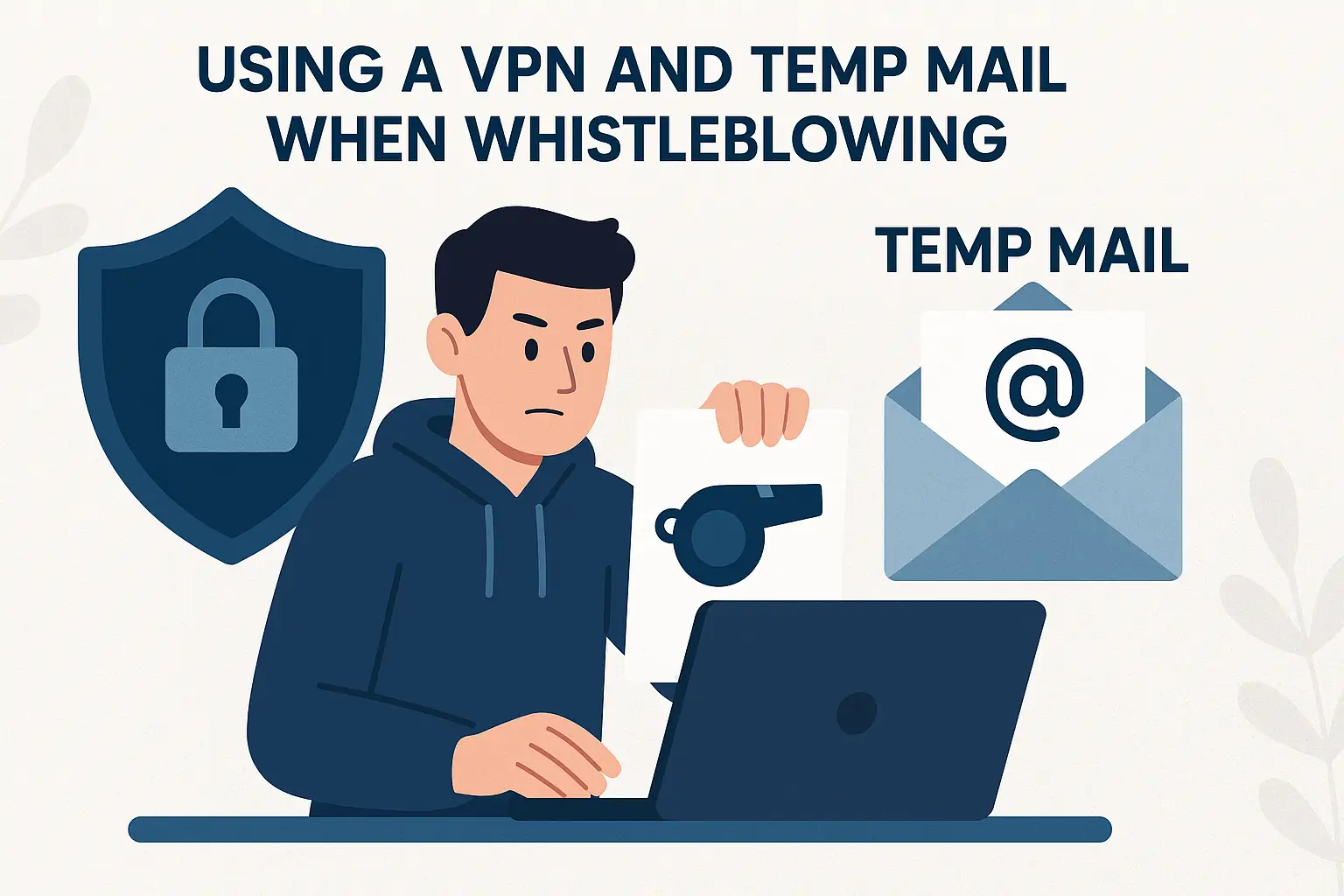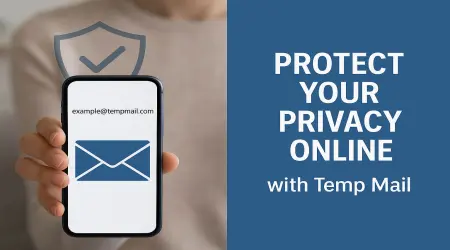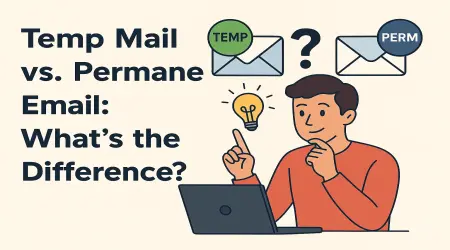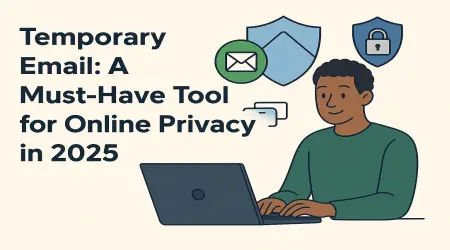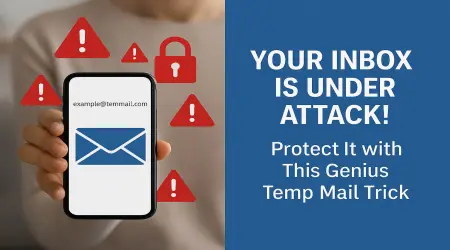
Introduction — Why anonymity matters
Whistleblowing plays a vital role in exposing wrongdoing, corruption and threats to public safety. But disclosure can carry significant personal, professional and legal risks. Minimizing those risks requires a deliberate, layered approach to digital privacy. Two accessible tools — a reputable Virtual Private Network (VPN) and temporary email (commonly called temp mail) — form a practical baseline for safer reporting when used correctly.
Risks whistleblowers face
Understanding what you are protecting against helps you choose the right measures. Common risks include:
- IP and location exposure: your internet address can identify your approximate location and ISP.
- Metadata linking: even innocuous headers or file metadata can tie documents back to you.
- Email traceability: sending from a personal account reveals identity and provider logs.
- Device compromise: malware or backdoors can leak activity despite privacy tools.
Tools are most effective when paired with safe behavior — the combination of technology and disciplined habits reduces the likelihood of identification.
What a VPN does (and does not do)
What it does
A VPN creates an encrypted tunnel between your device and a VPN server. Key benefits when whistleblowing include:
- IP masking: websites and services see the VPN server’s IP, not your home or work IP.
- Traffic encryption: your ISP cannot read the contents of your traffic, just that you are connected to a VPN.
- Geolocation flexibility: connect via countries with stronger privacy protections if needed.
What it does not do
A VPN is not a silver bullet. It will not protect against:
- Compromised devices (keyloggers, malware).
- Linkage through account details you voluntarily provide.
- Legal orders compelling the VPN provider to disclose logs (if they keep any).
Choose a VPN with a clear no-logs policy, strong encryption (AES-256 or equivalent) and a good track record. Prefer providers headquartered in privacy-friendly jurisdictions when possible.
Temp mail: role and limitations
Temp mail provides a disposable email address you can use for initial contact, verification links or submitting documents without exposing your primary inbox. It reduces the risk of provider-level tracing through your personal account.
Strengths
- Instant generation with no personal details required.
- Short lifespan — inboxes and messages are purged automatically.
- Useful for one-time confirmations, secure dropboxes, and initial outreach.
Limitations
- Not suitable for long-term correspondence or account recovery.
- Some providers expose inboxes publicly — avoid those for sensitive reporting.
- Sites may block known disposable domains; plan alternative reporting paths.
All temp mail links in this article point to tempmail44.com for convenient access to disposable addresses and privacy resources.
Combining VPN + Temp Mail — step-by-step
The following workflow minimizes operational mistakes that commonly expose whistleblowers.
- Prepare a clean device: use a personal device that you control. Prefer a freshly updated system; if possible, use a secondary device dedicated to secure tasks.
- Install and verify the VPN: choose a reputable VPN client, install it, and verify functionality by checking your IP via a trustworthy IP check site while connected to the VPN.
- Connect to the VPN before any action: always enable the VPN before opening the browser or generating any temp mail address.
- Use the browser’s private mode: open a new private/incognito window to avoid cached identifiers and cookies.
- Generate a temp mail address: visit tempmail44.com and generate a disposable inbox. Do not provide personal data when prompted elsewhere.
- Remove metadata from documents: scrub files (documents, images) of metadata and hidden information. Use trusted tools to sanitize before sending.
- Submit via secure channels: use the temp mail address or secure dropboxes (ideally recommended by the receiving journalist/organization) to transmit documents.
- Discard and disconnect: after successful submission, allow the temp mail to expire and disconnect the VPN only after verifying there is no local session data left; clear temporary files and browser history.
Operational discipline is as important as the tools. One careless login or leaked detail can undo layers of technical protection.
Operational security — common mistakes to avoid
- Logging into personal accounts: never access your main email, social media, or bank accounts while connected to the VPN session used for whistleblowing.
- Reusing identifiers: don’t reuse usernames or images that can be traced to your identity.
- Neglecting file hygiene: failing to remove document metadata is a frequent leak vector.
- Assuming provider infallibility: verify the VPN’s privacy claims and consider risk of legal compulsion.
Legal and ethical considerations
This article is educational and not legal advice. Laws protecting whistleblowers differ by country and context. Before proceeding:
- Consider consulting an attorney or an organization that supports whistleblowers.
- Favor responsible disclosure — share information that is in the public interest and avoid unlawfully obtained classified materials where local laws prohibit disclosure.
- Understand local cybersecurity and data protection laws that may affect transmission or possession of certain material.
Using privacy tools to evade the law or commit wrongdoing is not condoned. The guidance here aims to reduce risk during responsible whistleblowing.
Best-practices checklist
- Use a reputable VPN (no-logs, AES-256 or equivalent).
- Connect VPN before opening the browser; use private mode.
- Generate temp mail at tempmail44.com and avoid public inboxes.
- Sanitize documents (remove metadata, redact sensitive fields).
- Send via secure channels recommended by trusted journalists or organizations.
- Keep local copies secure; delete or encrypt when no longer needed.
- Seek legal advice if the disclosure involves classified or legally restricted material.
Frequently asked questions
Can I be fully anonymous if I follow these steps?
No single measure guarantees absolute anonymity. However, combining a VPN, temp mail and rigorous operational security dramatically reduces the risk of identification.
Which VPNs should I trust?
Prefer providers with audited no-logs policies, strong encryption, and an established reputation. Avoid free VPNs that may monetize user data.
Is temp mail always private?
Not always. Verify whether the provider exposes inboxes publicly, offers forwarding, or logs messages. Choose private inboxes when possible.
Conclusion & key takeaways
Whistleblowing is inherently sensitive. No tool removes all risk, but a layered approach — combining a trusted VPN with properly used temp mail, strict operational hygiene, and legal awareness — gives you practical protection that preserves both your safety and the integrity of the information you share. Start with small, reversible steps: select reputable tools, practice the workflow on non-critical tasks, and consult experts when in doubt.
